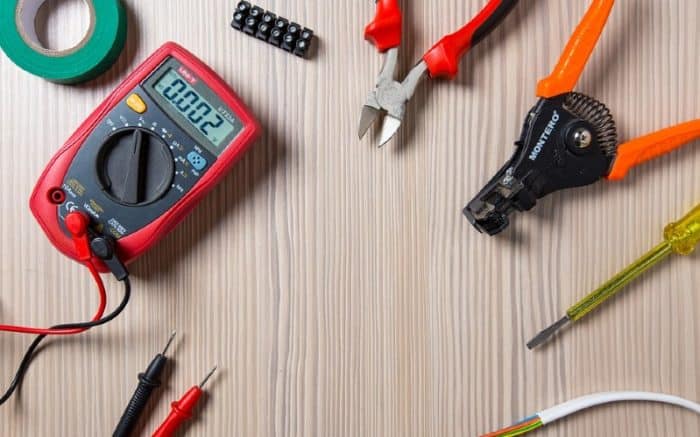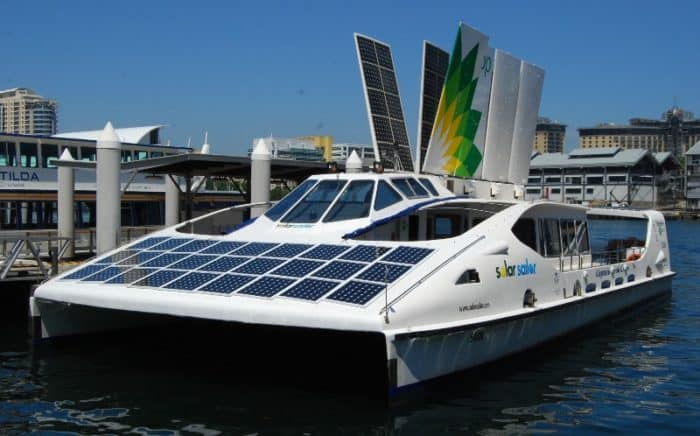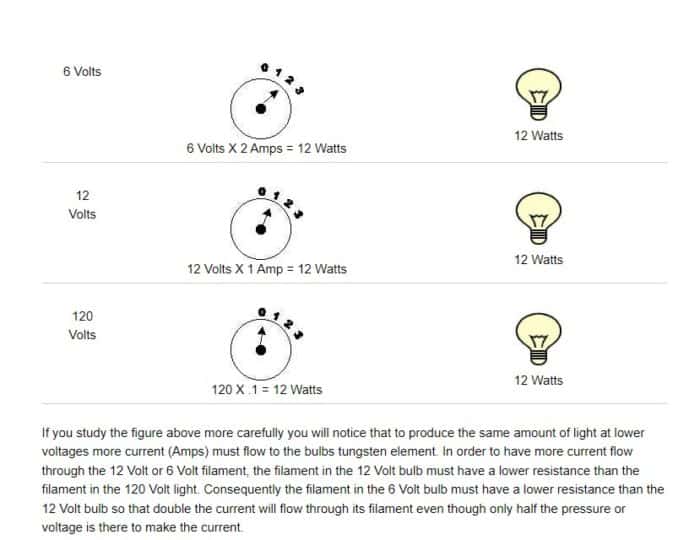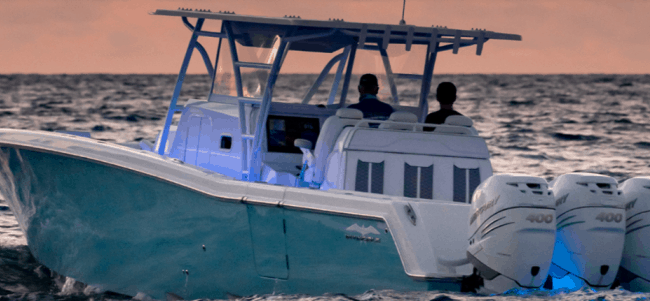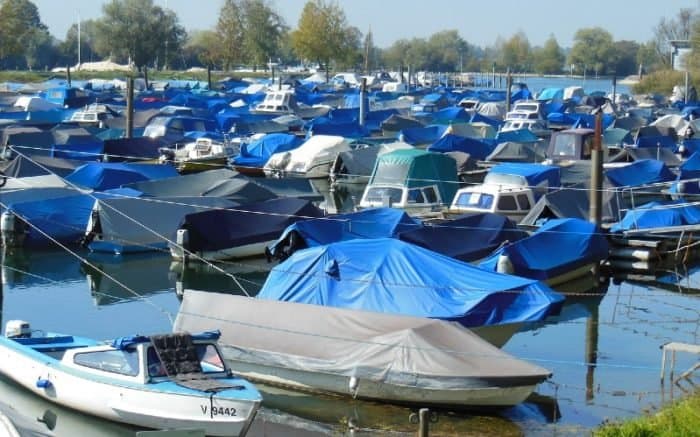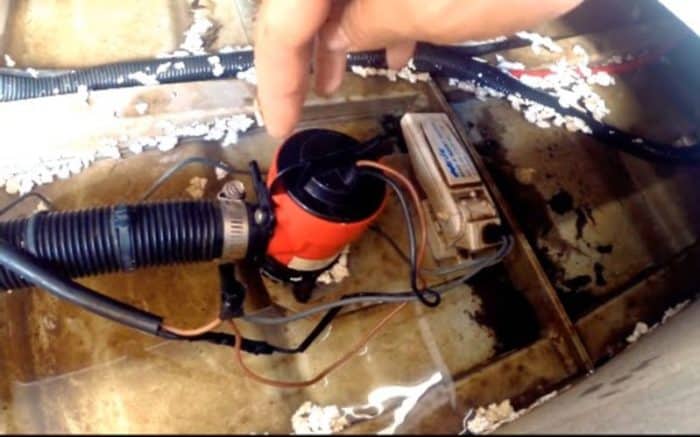Converting Amps, Watts and Volts: Boating Electrical Basics
If you’re operating a boat, you need to understand how the electrical system works. The problem for many newcomers is that not everything electrical is explained in plain English. The terminology can get confusing, especially when you need to understand voltage, wattage, and resistance. But you do need to understand how these terms work. Knowing the power demands of your vessel and its accessories is crucial. This will ensure you don’t blow any fuses or drain your battery.
Understanding Your Electrical Systems
When dealing with electrical systems, you will frequently run across three terms – amps, volts, and watts. Any electrician can explain these three units’ differences, but you’d be surprised how few lay people can. Most of us know they have something to do with power, and batteries are measured in volts, but how are they different? If you’re not sure, don’t feel bad. Let’s take a quick look at the differences.
Ampere: Most people refer to these as amps. It’s the base unit used to measure electrical current. The amount of electrons past a given point per second is measured in amps. All electricity is the flow of electrons.
Volts: A volt is a unit of electric potential; we measure them with voltage. Voltage deals with how much potential, which you can think of as a force, is behind each electron. You can consider amps, how many electrons there are, and volts, how much pressure is causing them to move. People often use a plumbing analogy here. Amps describe the amount of water flowing in a hose, but volts describe the pressure forcing the water out. When you compare voltages, a higher voltage indicates the potential to use more energy from the same current. A higher voltage battery could potentially operate more appliances or work longer than a lower voltage one, but the amps need to be factored in.
Watts: Watts are a combination of volts and amps. It doesn’t measure electricity, but the work that electricity can do. It is the flow rate of power. When one amp flows through an electrical difference of one volt, that is defined as a watt, so the higher the wattage of an electrical device, the more it can do. For instance, a 1200-watt microwave can cook your food faster than an 800-watt one.
What About Electrical Resistance?
Electrical resistance is a feature you don’t want in your electrical gear but can’t avoid. You want to minimize it as much as possible. However, Resistance limits the potential of your electrical system and the overall power performance your battery generates. More resistance equals wasted potential.
Ohms: Electrical resistance is measured in ohms. Resistance is much like the name suggests, and it is how much a given substance will oppose the flow of electricity through it. A copper wire is a great conductor and therefore has minimal resistance. A piece of rubber will not conduct electricity at all and can be considered to have high resistance. But even in a wire, there is still resistance. Bends or frays in wire create resistance, as does corrosion. The longer a wire travels from the power source, the more resistance it experiences. Likewise, wire size is essential. Thinner wires offer more resistance than thicker wires. If resistance becomes too great, power flow can be interrupted. This can lead to things like brownouts.
Nearly every electrical device you use on a boat will have wattage, voltage, or amperage listed somewhere on it. But if you don’t know what this means, the terms are pointless.
What is an Electrical Circuit?
Circuits are another term we come across frequently when discussing electrical systems. You’ve heard of short circuits and circuit breakers. So what does all of that refer to?
In the simplest terms, an electrical circuit is a closed loop. A single wire looped in a circle could be considered a circuit. It would allow the flow of electrons to continue along that wire endlessly as long as a current can continually be applied.
In more complex systems, a circuit is part of an electrical network. This is where you have a battery and things like resistors, inductors, transistors, and switches that allow the electrons to flow in the directions you need. They go from the battery to a light bulb, bilge pump, or refrigerator.
The critical thing to remember about a circuit is that it’s closed. That loop metaphor still stands. The power runs through the entire course; there isn’t a place where it stops or ends. That’s why there’s no safe place to grab a bare electric wire in a live circuit; the current constantly flows.
Everything on your boat that uses power should have a label detailing its power requirements. This should describe its demand for amperage and its output in watts. If not on a label, then in the electrical equipment manual.
Circuits on a Boat
For the most part, your boat will operate with one of two circuit designs. This keeps things simple and can be easy to figure out once familiar. You’re looking at either a series circuit or a parallel circuit.
Series Circuit: Unsurprisingly, if you connect components in your circuit in a series, it’s called a series circuit. Current through every element in the circuit is the same, and the voltage supplied is the sum of the voltage across each component. Think of this like Christmas lights if one morning in, the circuit shorts out, all the lights go out. That’s because the flow of the series has been stopped.
Parallel Circuit: Instead of being joined sequentially, your components are all wire parallel to each other. The voltage across each component in parallel will be the same, and the circuit current applied is the sum of current through each component. The wind is divided between the components.
Differences Between Series and Parallel Circuits
Flow: In a series circuit, the same amount of current flows through every component. In parallel circuits, the current flowing through each part combines to form the circuit through the source.
Resistors: If you place a resistor in a series circuit, the voltage across each will differ, but the current will remain the same. However, if you place a resistor in a parallel circuit, the voltage across each will remain the same.
Interruption: If a part of a series circuit breaks, the circuit will break. This is that Christmas light example again. If one fails, all fail. However, the course will not be damaged in a parallel circuit because they are arranged parallel. The other components will still function.
Arrangement: In a series, everything is arranged in a single line. In a parallel circuit, they are arranged parallel to one another.
When Do Circuits Matter on a Boat?
All your electrical components need to be wired in the circuit or parallel. Knowing how things are wired is essential, especially if something goes wrong. Plus, if you want to do any of your wiring, you’ll need to decide how to handle it. This is most often something that boaters installing solar panels deal with. Is it better to wire a solar panel or array in a series circuit or parallel?
As with everything else electrical, it depends. If there’s a chance your panels will be experiencing frequent shading because of a boom or something else, consider wiring them in parallel. This will help maintain a consistent power flow, even when one panel is in the shade.
If shading is not an issue, you may want to wire your solar panels in a series. This will not change the current, but it can increase the voltage. How does that work?
In a series, the total voltage is added up. So if you have three solar panels, the total voltage would be panel one plus panel two plus panel 3. However, if you wired them in parallel, then the full voltage would be equal across the board.
Wiring in series is also good if you have long power cables. The voltage from a parallel circuit may drop too significantly if you have longer wires for it to travel through.
If you wire solar panels in a series, consider splitting them up. Half on one side of the boat and half on the other. That will maximize current and voltage to ensure you get the most out of them.
What About Ampere-Hours?
Your battery will be able to tell you the number of ampere-hours available. This measures the capacity of a battery to meet the electrical demands placed on it. Ampere hours measure the current in amperes multiplied by the time it flows. If you have a battery that claims 100 ampere-hours, it doesn’t mean it can operate for 100 hours; that’s not how this works. What it means is that it could supply 100 amps for one hour. So if you have a trolling motor, a handful of lights, and a phone charging, you’d need to calculate how many amps they all require to determine the demand they’d put on your battery.
A 100 amp-hour battery gives 100 amps for one hour. But that also means you can expect 50 amps for two hours. Or 25 amps for four hours. If you only drew one amp, it’d last 100 hours.
It’s worth noting that this is on paper. You’d never expect a battery rated at 100 amp hours to run at one amp for 100 hours. Discharge rates are often considerably different than how they are listed. It’s a bit like gas mileage in a car; it never measures up to what the technical specs advertise because there are many variables.
Electrical System Terms
A few terms come up a lot when dealing with electrical systems on boats. It’s worth knowing what they mean so you don’t get lost in figuring out certain aspects of circuits and your boat’s electrical systems.
Current: This is the movement of electricity through a conductor, typically a wire. This is the one measured in amps. Current in most electronics is measured in AC or DC. AC means alternating current and refers to an electron flow that reverses direction at regular intervals. DC electricity is direct current and refers to a steady flow of electrons moving in the same direction from a point of high potential to one of low potential. Boats operate on DC power. The battery supplies it and is low voltage overall. Higher-power appliances typically need AC power to work, but converters are available.
Voltage: The force, sometimes called electromotive force, causes the electric current to flow in a circuit. Higher voltage doesn’t equal more power but increases the potential of the already available current.
Resistor: A device used to resist the flow of electrical current. This is necessary sometimes to reduce current flow or divide voltage among other uses.
Switch: A switch is a device that can connect or disconnect the flow of electrical circuits. For instance, a light button on your wall can either complete the electric circuit when you turn the light on or interrupt the course when you turn the light off.
Transistor: This is a semiconductor that works like a relay. A transistor can switch or amplify signals. A smaller current can be strengthened to a larger current inside.
Inductor: Sometimes called a coil, an inductor can store electrical energy in a magnetic field.
Capacitor: Like an inductor, this is also able to store energy. It filters voltage spikes so your components don’t suffer damage from sudden voltage increases.
How to Calculate Amps, Watts, and Volts
You must know what can handle operating where because you may be improvising with your electrical system. That means understanding the equations of how to convert amps, volts, and watts. If you can’t do this, you risk killing your battery. That’s not something any boater wants to experience. Let’s examine those basic equations that can help you get through this.
Watts = Amps x Volts
Example:
15 Amps x 120 Volts = 1800 Watts
5 Amps x 120 Volts = 600 Watts
Amps = Watts divided by Volts
Examples:
1800 Watts / 240 Volts = 7.5 Amps
4400 Watts / 160 Volts = 27.5 Amps
Volts = Watts divided by Amps
Examples:
3600 Watts / 25 Amps = 144 Volts
2400 Watts / 15 Amps = 160 Volts
Be Cautious
Never take chances when dealing with your boat’s electrical system. Ensure all power is off and the battery is disconnected before attempting any wiring. AC power is far more dangerous and can be fatal. But the DC power on most boats is no joke, either.
If you are working on your boat’s electrical, ensure everyone on board knows it. If people may be coming on board and leaving again, put a note near any switches and breakers to let people know not to touch anything.
Take safety precautions seriously. Wear goggles and rubber-soled shoes. Never do electrical work in a wet area.
Make sure you use wires intended for a marine environment. This included insulation and backing materials as well. Marine wire is a particular kind of wire. You don’t want to skimp on this. Look for tinned copper wire. It will be a silver color. Check with a marine supply store if you aren’t sure. You want multi-strand wire, and the insulation should be able to resist oil. If you plan to use the wiring near the engine, it must also be rated to handle high heat. That means around 70 Celsius. Good quality wiring will detail this on the package so you know you have the right stuff. If these details are not included, you may not want to risk buying them.
When you have the power off, it’s a good time to do an inspection. Check all of your wiring for weak spots. Look for cracks and breaks in the plastic sheaths. Check for any corrosion at connection points. Also, look for places where the wires may have melted or discolored from overheating. These wires should all be replaced. They’re a risk for wasting your battery and potentially causing fires.
The Bottom Line
Everyone wants things to run smoothly on their boat. Unfortunately, figuring out electrical systems can be difficult, especially if you’re not experienced. No one wants to call an electrician to figure out the basics. Always make sure you’re paying attention to how much your battery and solar panels can handle in total. When you need to, do the math and then double-check to make sure you know whether or not you have the power to drive new components and for how long they can run. Always keep your battery charged and consider having backups in emergencies. A reliable battery charger should be something every boater has on hand. A good multimeter can help you figure out how much power you have to use and determine what your components are drawing when you’re unsure.
Categories: nauticalknowhow
